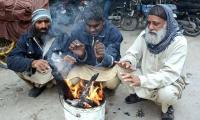Rome is scorching hot. This beautiful city is becoming unbearable for other reasons, too. Though every corner of the beaming metropolis is a monument to historical grandeur, from the Colosseum in Rione Monti to the Basilica of Saint John Lateran in San Giovanni, it is now struggling under the weight of its own contradictions.
In Via Appia, bins are overflowing with garbage, often spilling over into the streets. The smell, especially during Italy's increasingly sweltering summers, is suffocating.
Meanwhile, many parts of the country are literally on fire. Since June 15, firefighters have reportedly responded to 37,000 fire-related emergencies, 1,500 of them on July 18 alone. A week later, I drove between Campania, in southern Italy, and Abruzzo, in the center. Throughout the journey, I was accompanied by fire and smoke. On that day, many towns were evacuated, and thousands of acres of forests were destroyed. It will take months to assess the cost of the ongoing destruction, but it will certainly be measured in hundreds of millions of euros.
Additionally, the entire southern Europe is ablaze, as the region is experiencing its worst heat waves in many years. Greece, Spain, Turkey, and the Balkans are fighting fires that continue to rage on.
Across the Atlantic, the US and Canada, too, are desperately trying to battle their own wildfires, mostly direct outcomes of unprecedented heat waves that struck North America from Vancouver to California, along with the whole of the American northwest region. In June, Vancouver, Portland and Seattle all set new heat records, 118, 116 and 108 Fahrenheit, respectively.
While it is true that not all fires are a direct result of global warming – many in Italy, for example, are man-made – unprecedented increases in temperature, coupled with changes in weather patterns, are the main culprits of these unmitigated disasters.
The solution is more complex than simply having the resources and proper equipment to contain these fires. The impact of the crises continues to be felt for years, even if temperatures somehow stabilize. In California, for example, which is bracing for another horrific season, the devastation of the previous years can still be felt.
“After two years of drought, the soil moisture is depleted, drying out vegetation and making it more prone to combustion,” The New York Times reported on July 16. The problem, then, is neither temporary nor can be dealt with through easy fixes.
As I sat with my large bottle of water outside Caffettiamo Cafe, struggling with heat, humidity and the pungent smell of garbage, I thought about who is truly responsible for what seems to be our new, irreversible reality. Here in Italy, the conversation is often streamlined through the same, predictable and polarized political discourse. Each party points finger at the others, in the hope of gaining some capital prior to the upcoming October municipal elections.
Again, Italy is not the exception. Political polarization in Europe and the US constantly steers the conversation somewhere else entirely. Rarely is the problem addressed at a macro-level, independent from political calculations. The impact of global warming cannot and must not be held hostage to the ambitions of politicians. Millions of people are suffering, livelihoods are destroyed, the fate of future generations is at risk. In the grand scheme of things, whether the current mayor of Rome, Virginia Raggi, is elected for another term or not, is insignificant.
Excerpted: ‘Greed and Consumption: Why the World Is Burning’
Commondreams.org
There are over 11 million Pakistanis settled abroad, out of which around six million work in Gulf and Middle East
This year alone, US Treasury would have to roll-over $10 to $14 trillion in maturing short-term debt
Tear gas no longer marks just protest sites; it paints entire cities as battlegrounds but then again, PTI did it first
Political structures and governance systems have been central to economic and social development
It is confirmed now 40 Pakistanis had died after boat of migrants had capsized in sea near Greece
Many people believe that in future, AI will play an even more significant role in their lives







